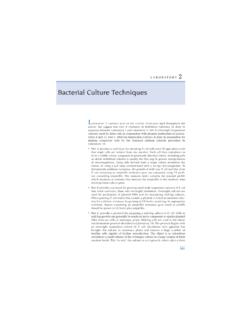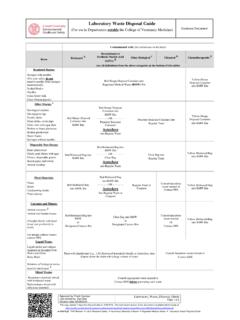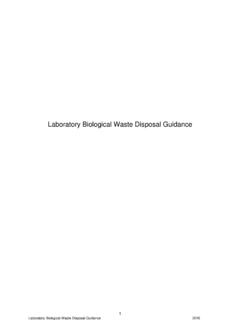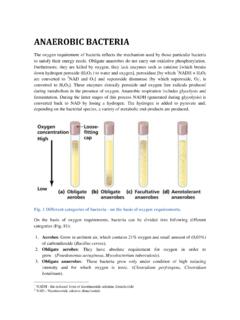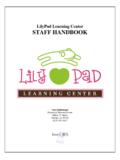Transcription of SCIENTIFIC DISCUSSION 1. Introduction
1 1/42 EMEA 2005 SCIENTIFIC DISCUSSION This module reflects the initial SCIENTIFIC DISCUSSION for the approval of Herceptin. This SCIENTIFIC DISCUSSION has been updated until 30 November 2004. For information on changes after this date please refer to module 8B. 1. Introduction Herceptin contains the active substance trastuzumab (anti-p185, rhuMab HER2), which is a humanised monoclonal antibody that binds to the HER2 protein. HER-2 is a transmembrane spanning receptor-like protein, which is structurally related to the epidermal growth factor receptor and has been shown to inhibit the proliferation of human tumor cells that overexpress HER2 both in vitro and in vivo.
2 Herceptin is presented as a white to pale yellow lyophilised powder for concentrate for solution for infusion. Herceptin is indicated for the treatment of patients with metastatic breast cancer whose tumours overexpress HER2: a) As monotherapy for the treatment of those patients who have received at least two chemotherapy regimens for their metastatic disease. Prior chemotherapy must have included at least an anthracycline and a taxane unless patients are unsuitable for these treatments. Hormone receptor positive patients must also have failed hormonal therapy, unless patients are unsuitable for these treatments. b) In combination with paclitaxel for the treatment of those patients who have not received chemotherapy for their metastatic disease and for whom an anthracycline is not suitable.
3 Herceptin should only be used in patients whose tumours have HER2 overexpression at a 3+ level as determined by immunohistochemistry. The recommended dosage scheme consists of a trastuzumab loading (4mg/kg body weight) and subsequent weekly doses of 2-mg/kg body weights. It should be administered until progression of disease. 2. Chemical, pharmaceutical and biological aspects Documents were filed according to the Notice to Applicants. During the approval procedure, the applicant performed the validation of a new manufacturing site for the active substance at Genentech, Vacaville, and USA. In addition, due to the non acceptance of the submitted multidose finished product formulation which originally contained benzyl alcohol after reconstitution, which is not in compliance with the Ph.
4 Eur. the applicant changed the manufacturing procedure, the fill size of the finished product and the manufacturing site of the finished product from Genentech, USA to Roche, Basel. These changes resulted in a new set of data on the active substance and finished product provided with the response. A separate solvent is no longer part of the drug product. The manufacturing sites of Vacaville (active substance) and of Hoffman La-Roche Basel (finished product) were inspected following a CPMP request and found in general compliance with EC-GMP (Inspection report is annexed to this assessment report). 2/42 EMEA 2005 Composition Trastuzumab is formulated as a lyophilised powder and each vial is designed to deliver 150 mg trastuzumab.
5 The finished product also includes mg L-Histidine HCl, mg L-Histidine, mg trehalose, dihydrate, and mg polysorbate 20. The sterile solution is filled aseptically into 15 ml Type I borosilicate glass vials with 20 mm lyophilised stoppers and lyophilised using validated methods. The lyophilised vial (finished product) is reconstituted with ml of sterile water for injections (not supplied) to yield a single-dose formulation at 21-mg/ml trastuzumab, at pH of approximately A volume overage of 4% ensures that the labelled dose of 150 mg can be withdrawn from each vial. The reconstituted HERCEPTIN is a colourless to pale yellow transparent solution and should be essentially free of visible particulates.
6 The required volume is determined on the basis of a loading dose of 4 mg trastuzumab /kg body weight, or a subsequent weekly dose of 2 mg trastuzumab/kg body weight. The appropriate amount of solution should be withdrawn from the vial and added to an infusion bag containing 250 ml of sodium chloride solution. The single dose vial of 150 mg was used for clinical trials outside the US. However in the dossier originally submitted Herceptin was presented as a multidose formulation of 440 mg trastuzumab to be reconstituted with 20 ml of Bacteriostatic Water for Injection, containing benzyl alcohol to yield a multi dose formulation at 21 mg/ml trastuzumab.
7 As the use of preservative was contrary to the Ph. Eur. requirements the applicant following a CPMP request changed to 150 mg single dose vials to be reconstituted with sterile water for injections without preservative. Product development and finished product Method of preparation The applicant developed a new final dosage form to obtain 150 mg as a single dose preparation without the need for a preservative in the reconstitution solution. In contrast to the originally submitted dossier, filling and lyophilization is now performed at the Roche, Basel, and facility. With the response, the applicant provided data on three pilot scale batches of Herceptin 150 mg which were completed by a second response including data on the validation of the full-scale manufacture on three full-scale batches produced at manufacturing scale.
8 Trastuzumab bulk drug substance for storage is aseptically filled into 120 L stainless steel tanks at Vacaville, USA, during prefiltration and stored at -20 C prior to use. The manufacture of Herceptin starts at Roche, Basel, with thawing of bulk material, pooling of up to three bulk lots and aseptically filtration. After filling under aseptically conditions the material is lyophilised. Production and control of active substance. Trastuzumab was generated by the immunisation of Balb/c mice with cells expressing HER-2 on their surface and partially purified membranes containing p185 HER-2 according to standard hybridoma techniques. Hybridomas were either screened by an ELISA utilising immobilised p185-HER-2 protein, an assay detecting HER-2 mediated growth inhibition of SK-BR-3 cells or a nude mice breast cancer xenograph model, resulting in muMAb 4D5.
9 The humanisation of muMAb 4D5 was performed according to standard procedures after the determination of the primary sequence of the VH+L chain regions of muMAb resulting constructs were designed to express the human Fc 1 isotype to maximally support CDC and ADCC. The resulting antibody of the humanisation huMAb 4D5-8, which expressed maximal amount of the humanised antibody, is reported to bind to ECD of HER-2 about 3-fold more tightly than muMAb 4D5. The active substance trastuzumab is produced in recombinant Chinese Hamster Ovary cells using a serum free medium. The MCB, WCB and End of Production cells were characterised sufficiently.
10 MCB andWCB were adapted to growth in serum free medium. Manufacturing process of the active ingredient starts with thawing and expansion of cells from the MCB or the WCB derived from the MCB. cells are expanded using a seed train and fermenters from 80 liters up to 12 000 liters. 3/42 EMEA 2005 After harvesting different chromatographic steps are used for purification. With affinity chromatography (Protein A) unwanted protein and potential endotoxin contaminants can be removed. Cation ion exchange chromatography removes antibody aggregates and fragments and CHO impurities.










